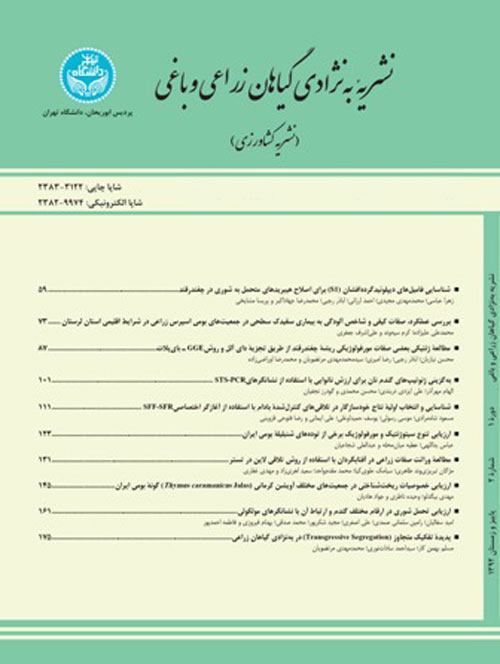Evaluation of salinity tolerance in wheat varieties and its relation with Molecular markers
Abstract:
Wheat (Triticum aestivum L.) is a major staple food crop for more than one third of the world population and is the main staple food of Asia. Over 800 million hectares of land throughout the world are salt affected. Salinity is a major obstacle to food production because it substantially reduces the average yield of major crops. This study was conducted to evaluate the response of 24 cultivars and genotypes of wheat (Triticum aestivum L.) to NaCl salinity at early seedling growth and correlation between affected morphophysiological traits and molecular markers. Genotypes grew in hydroponic nutrient solution, under control (tap water) and salt stress (45 and 90 mM NaCl) conditions. Results of ANOVA analysis showed that there are significant difference (in one percent P-value) between genotypes and all of measured traits in different levels of salinity. A total of 20 RAPD and 34 ISSR primers were tested to investigate genetic diversity in 24 wheat genotypes. Of these, only 15 ISSR and 6 RAPD primers produced polymorphic bands and were further used for genetic diversity and regression analysis. Cluster analysis was performed based on jaccard coefficient and all genotypes were divided into 4 groups. Average genetic distance between genotypes was 0.486, showed that there is considerable variation among these genotypes. Regression analysis, also, revealed that there are significant relations between measured traits and using markers were investigated.
Keywords:
Language:
Persian
Published:
Journal of Applied Crop Breeding, Volume:1 Issue: 2, 2013
Pages:
161 to 174
https://magiran.com/p1318748


